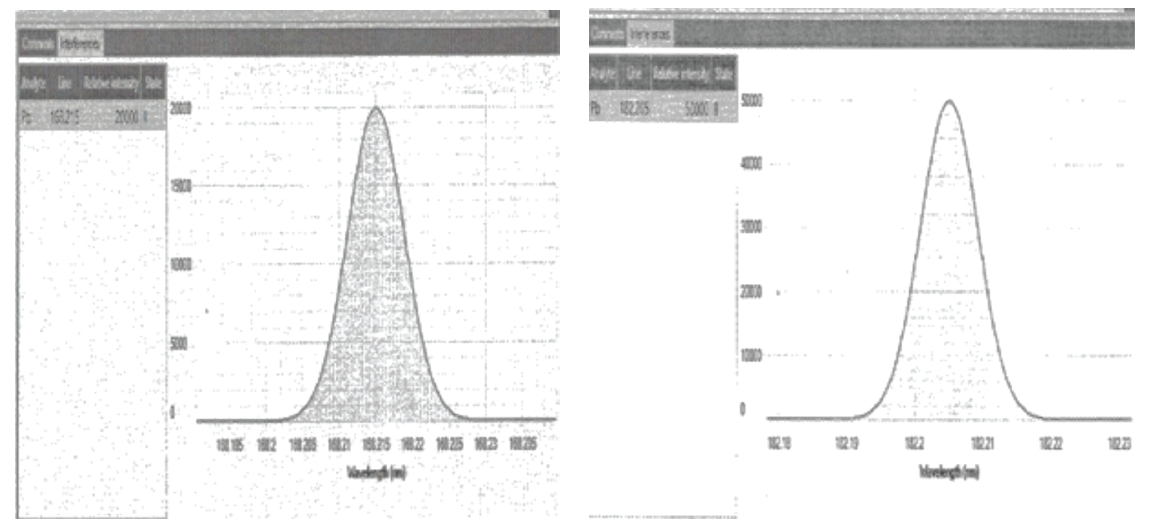The development of test method for determination of lead in aluminium and aluminium alloy by inductively coupled plasma optical emission spectrometry
DOI:
https://doi.org/10.60136/bas.v12.2023.401Keywords:
Inductively coupled plasma optical emission spectrometry, Aluminium, LeadAbstract
This research has developed a rapid, accurate and precise method based on inductively coupled plasma optical emission spectroscopy for determination of lead in aluminium and aluminum alloys using non-matrix matched calibration curve. Performance characteristics which are linearity, Limit of Determination (LOD), Limit of Quantitation (LOQ), bias, precision and matrix effect were studied. The target uncertainty associated with the quantification of lead in aluminium and aluminum alloys, should be no bigger than 20%. From the study, it was found that LOD and LOQ are 2.164 and 100.0 mg/kg, respectively, while working range of this method was 100.0 - 500.0 mg/kg. The method bias was evaluated from the recoveries of the standard substance added to the lead-free aluminum at 3 concentration levels (low, medium and high) of the working range under repeatability conditions. It showed that the recoveries were 81.76-83.43%. For the precise of the intermediate repeatability condition, the same concentration of the bias study was added to the samples showed that the relative standard deviation was less than 3% and the matrix effect was investigated by a comparison paired sample test between the non-matrix matched calibration method and matrix matched calibration method. The Paired t-test is tcal (2.409) less than tcrit (4.30). It was found that there is no matrix effect. The information obtained from the developed method can be used to estimate measurement uncertainty [1]. It was found that the expanded uncertainties of this method at the confidence level of 95% was 19%. Therefore, the proposed method for determination of lead in aluminium and aluminum alloys is accurate, precise, reliable, and fit for the intended use.
References
Barwick VJ, Ellison SLR. VAM Project 3.2.1 development and harmonisation of measurement uncertainty principles part (d): Protocol for uncertainty evaluation from validation data version 5.1 [Internet]. Teddington (UK): LGC (Teddington) Limited; 2000 [cited 2022 Dec 20]. Available from: http://www.demarcheiso17025.com/private/Protocol%20for%20uncertainty%20evaluation%20from%20validation%20data.pdf
กระทรวงสาธารณสุข. ประกาศฉบับที่ 92 (พ.ศ. 2528) การกำหนดคุณภาพหรือมาตรฐานของภาชนะบรรจุ การใช้ภาชนะบรรจุ และการห้ามใช้วัตถุใดเป็นภาชนะบรรจุอาหาร [อินเทอร์เน็ต]. 2528 (เข้าถึงเมื่อ 22 พฤศจิกายน 2565]. เข้าถึงได้จาก: https://food.fda.moph.go.th/law/data/announ_moph/P92.pdf
สำนักงานมาตรฐานผลิตภัณฑ์อุตสาหกรรม (สมอ.). มาตรฐานผลิตภัณฑ์อุตสาหกรรมอะลูมิเนียมเปลว. มอก. 325-2532. กรุงเทพฯ: สมอ.; 2532.
Thomsen VBE. Modern spectrochemical analysis of metals: An introduction for users of arc/spark instrumentation. Michigan: ASM International; 1994.
ASTM International. Standard test method for analysis of aluminum and aluminum alloys by spark atomic emission spectrometry. ASTM E1251-17a. West Conshohocken, Pennsylvania: ASTM International; 2017.
ASTM International. Standard test method for analysis of aluminum and aluminum alloys by inductively coupled plasma atomic emission spectrometry. ASTM E3061-17. West Conshohocken, Pennsylvania: ASTM International; 2017.
United States Environmental Protection Agency (U.S.EPA). Inductively coupled plasma-atomic emission spectrometry. Method 6010D (SW-846). Washington, DC: U.S. EPA; 2014.
Thermo Fisher Scitific Inc. iCAP PRO Series ICP- OES Operating Manual. Bremen, Germany: Thermo Fisher Scitific; 2020.
National Association of Testing Authorities (NATA). Technical note 17 guidelines for the validation and verification of quantitative and qualitative test methods [Internet]. 2013 [cited 2023 Mar 15]. Available from: https://www.studocu.com/en-au/document/queensland-university-of-technology/ pathology/nata-technical-note-17-october-2013/15147792
Part I AOAC Guidelines for single-laboratory validation of chemical methods for dietary supplements and botanicals In: Latimer GW.Jr, editor. Official methods of analysis of AOAC International [Internet]. 22nd ed. New York: AOAC Publication; 2023 [cited 2023 Mar 15] Available from: https://doi.org/10.1093/9760197610145.00 5.011

Downloads
Published
How to Cite
Issue
Section
License
Copyright (c) 2023 Bulletin of Applied Sciences

This work is licensed under a Creative Commons Attribution-NonCommercial-NoDerivatives 4.0 International License.









